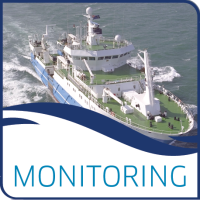The mapping is based of secondary data sources for bottom fishing pressure (OSPAR), sediment type and organic carbon (OC) content (Smeaton et al 2021), and sediment lability as a function of grain size (Smeaton et al 2022). A new calculation methodology has been created to estimate the potential vulnerability of OC to bottom fishing induced disturbance as a function of sediment grain size and resettling speed. This allows for the potential OC lost through lateral transportation, consumption, or remineralisation as a result of bottom fishing disturbance to be estimated. By using fuzzy set theory, the potential vulnerability of sedimentary OC is estimated and mapped for the UK EEZ. All calculations and modelling were carried out within the ESRI ArcGIS software package using the spatial overlay, raster calculator and the zonal statistics tools. Full details of the study and methodology can be found in Black et al. (2022) and relevant supporting documents.
Data and Resources
- 022 UK EEZ sedimentary organic carbon vulnerability ranking estimates - Map Packagezip
Outlines Layer Package
Download
Description: Country outlines for England,...
| Field | Value |
|---|---|
| Publisher | |
| Modified | 2022-07-27 |
| Release Date | 2022-07-27 |
| Identifier | 2fe5fdae-8484-4feb-b156-1c923e0d5432 |
| Spatial / Geographical Coverage Area | POLYGON ((-13.3011 49.6999, -13.3011 61.252, 3.5739 61.252, 3.5739 49.6999)) |
| Temporal Coverage | 2009-01-01 to 2020-12-31 |
| Language | English (United Kingdom) |
| License | UK Open Government Licence (OGL) |
| Data Dictionary | Shapefiles and datasets obtained from OSPAR, Smeaton et al., 2021, and Smeaton et al., 2022 were used to create the GIS layers on the potential carbon vulnerability ranking of marine sedimentary carbon under anthropogenic disturbance from different types of fishing gears. |
| Contact Name | Marine Scotland |
| Contact Email | |
| Public Access Level | Public |


